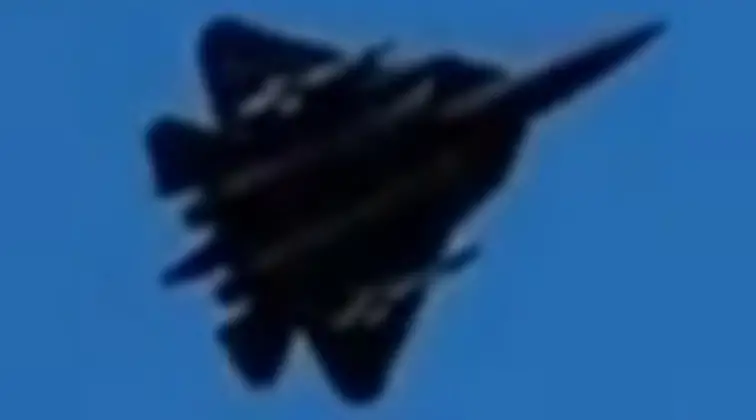<p>Footage released on October 19 has shown a Russian Air Force Su-57 fifth generation fighter carrying what appear to be two Kh-59 cruise missiles externally, as the fighter class continues to participate in operations against Ukrainian and <a href=" target="_blank">allied Western forces</a>. The unusual configuration has raised a number of questions regarding how Su-57s are operated, as the fifth generation fighters are designed with reduced radar cross sections to improve survivability, while external carriage of missiles as shown in the footage increases these cross sections to similar levels seen on fourth generation non-stealth aircraft. The configuration seen in the recent footage negates one of the Su-57's primary advantages over fighters from the previous generation such as the Su- 30 and Su-35 – although even without stealth the Su-57's far higher endurance, more powerful sensors and superior avionics and flight performance still make it a far more capable aircraft.&nbsp;</p><p><img src=" title="Su-57 Fighter Prototype"></p><p>A likely explanation for external carriage of Kh-59 missiles is that the Russian Air Force is seeking to maximise combat operations using the new fighters. More operations allow a wider pool of personnel to gain experience flying and maintaining the aircraft more quickly, which is particularly important as annual deliveries <a href=" target="_blank">increase</a> rapidly. Deliveries reached&nbsp;<a href=" target="_blank">12 fighters in 2023</a>, and are expected to <a href=" target="_blank">reach 20 fighters </a>this year. Missiles suitable for internal carriage by the Su-57 such as the Kh-59MK2 are significantly more costly than higher diameter older cruise missies, while offering relatively few benefits in the Ukrainian theatre where the threat to aircraft are limited. With Ukrainian air power having been <a href=" target="_blank">greatly diminished</a>, and its air defences <a href=" target="_blank">seriously eroded</a>, deploying less costly older Kh-59 missiles allows Su-57 units to maintain a high tempo of operations at a significantly lower cost to the Air Force. It also allows supplies of the<a href=" target="_blank"> new Kh-59MK2</a> compatible with the fighter's stealth configuration to be conserved for potential conflicts with much more capable adversaries – namely NATO members. The rate at which the Su-57 fleet is growing could make conserving the missiles particularly important.</p><p><img src=" ></p><p>Su-57s have deployed to areas with high concentrations of Ukrainian air defences in the past, most notably in early October when one of the aircraft was<a href=" target="_blank"> used to shoot down</a> a Russian S-70 drone prototype which appeared set to crash in Ukrainian-held or NATO territory. The majority of <a href=" target="_blank">operations</a>, however, are not thought to have occurred at ranges that place the fighters at risk, meaning the compromising of stealth capabilities is far from a serious issue. Under such circumstances, the deployment of cheaper external missiles remains a more cost effective means of employing Su-57s in the theatre. With the Russian Armed Forces having experimented extensively with utilising their weapons systems in new ways in the Ukrainian theatre, it also remains possible than the Su-57 seen in the footage was testing an expanded missile payload configuration which saw it carry external missiles alongside its&nbsp;full internal weapons bays. Such a configuration could potentially see fighters employ external missiles against less well defended targets, before jettisoning pylons to enter 'stealth mode.'</p>
Stealth Compromised: Why Russia’s Su-57 Fighter is Now Carrying Cruise Missiles Externally

